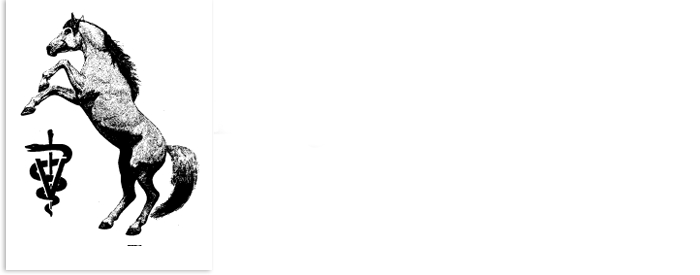Tying-Up - Understanding Tying-Up Syndrome
Tying-up is a laymen's term for the condition known as Exertional Rhabdomyolisis. In this condition there is massive contraction of the muscle groups along the back and rump of the horse. The muscles contract and do not relax. The horse will appear to be nailed to the floor in the back end while seemingly being able to move the front end with out any problems. They will appear to be in significant pain. When you press your hands along the muscles on either side of the spine, they feel rock hard. The horse's temperature may elevate up to 104 or 105 degrees.
The muscle contractions will be so fierce that blood supply to the muscle is cut off. This causes a lack of oxygen to the muscle cells which can die as result. As the muscle cells die the release a substance called myoglobin into the blood stream. Myoglobin is cleared from the blood stream via the kidneys and is colored red. In severe cases of tying-up the myoglobin concentrates in the urine giving the urine a red tinge. Many people will call me thinking there horse is urinating blood. Immediate treatment is necessary.
Treatment is four fold. Each aspect of treatment corresponds to an aspect of the disease. To treat the pain, a pain relieving drug such a phenylbutazone, ketophen or the morphine like drug, butorphenol, is given intravenously. The muscle contractions are so severe that circulation to affected muscle tissue may be cut off. This can cause massive loss of muscle cells. To dilate the blood vessels, so that muscle cells don't die, I give acepromazine. Acepromazine is more commonly known as a tranquilizer. However, it has significant ability to dilate constricted blood vessels. The tranquilizing effect will also relieve some of the anxiety horses experience with tying-up. To stabilize the muscle cell walls a corticosteroid such as dexamethasone is administered. This will limit the number of muscle cells which die. Finally, to relax the muscles which are contracted a muscle relaxing drug is administered. I use either methocarbomol (Robaxin) or dantrolene.
In severe cases where the urine is tinged red it is important to flood the horses circulation with intravenous fluids. The urine is tinged red because of a large release of myoglobin from dying muscle cells. Myoglobin in high concentrations can damage the kidneys as it is cleared from the blood stream. In cases where the myoglobin concentration is high enough to cause a red tinge to the urine, I will treat the horse with 12 to 20 liters of intravenous fluids. This effectively dilutes the concentration of myoglobin in the blood and flushes the kidneys.
Prevention of tying-up is critical to continue success of a horse. While it is difficult to predict which horse is will tie-up, once a horse has done so it is more likely to do it again. Incidence of tying-up are most common in well fed and well conditioned horses. They typically tie up on the first workout after a one or two day lay up. Mares, especially young nervous mares, tie-up more than geldings or stallions.
To prevent repeated episodes of tying-up some general principals apply. First, if the horse is going to be laid up for a day or two reduce the grain significantly. If you can, always give your horse turn-out time even if you do not ride. Some horse which tie-up benefit from an oral supplement. In some horses mixing in baking soda will stop tying-up. Other horses seemed to benefit from giving them Vitamin E and Selenium powder. Still others will only stop tying-up if they are fed the vitamin DMG. Lastly, I have had a couple horses who stopped tying-up when they were switched from a stall to a paddock.

